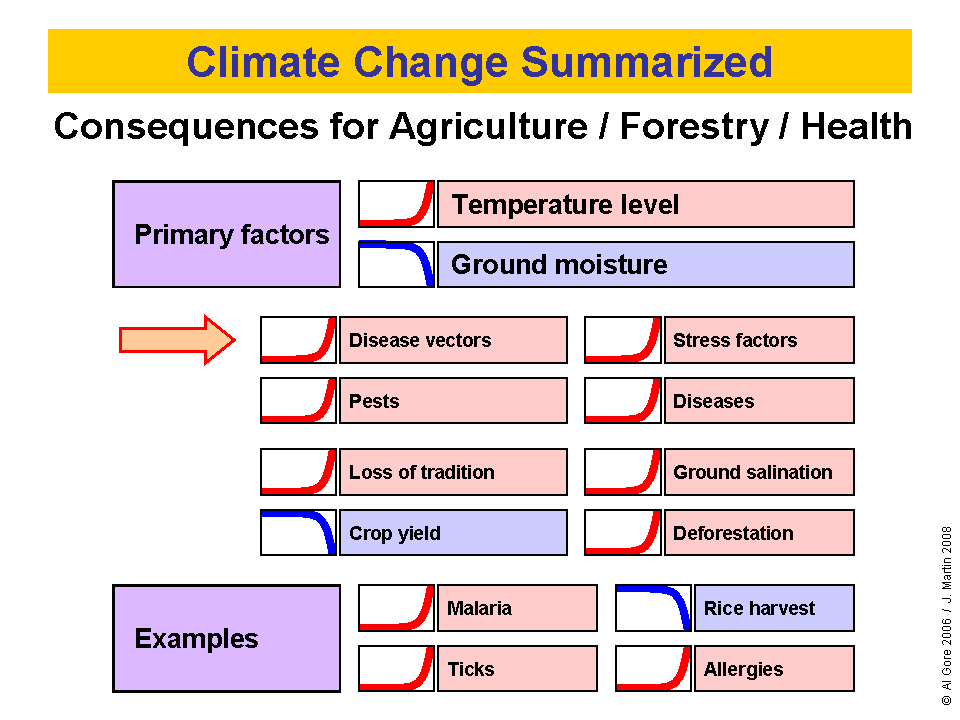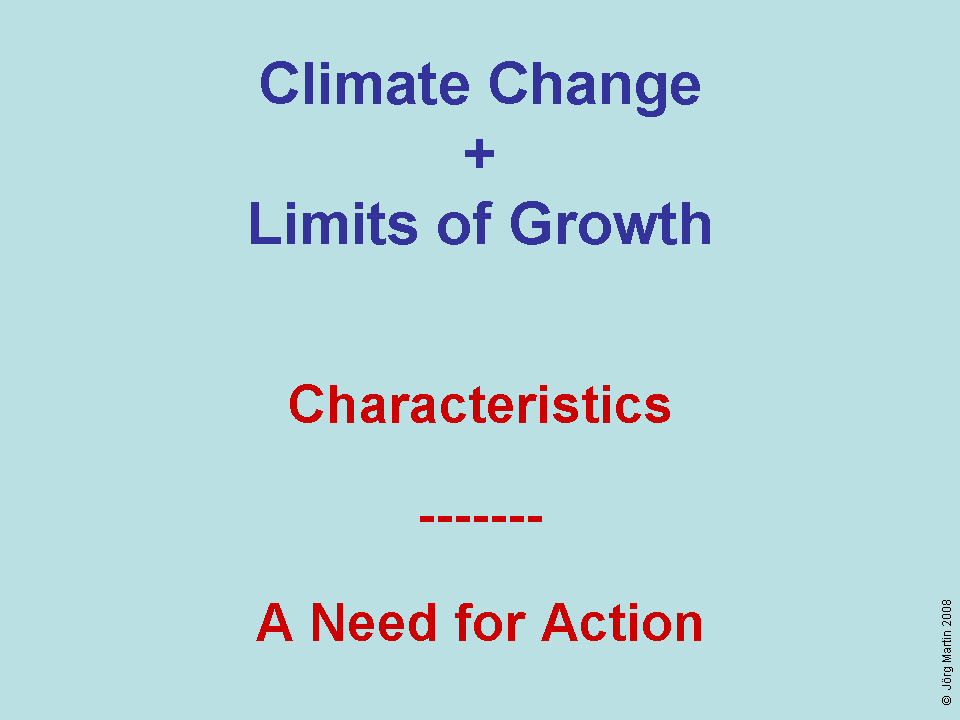
| Basics of Warming | |
| • | Climate Factors |
| • | Climate Effects |
| Consequences | |
| • | for Civilisation |
| • | for Ecosystem |
| • | for Other Topics |
Consequences for Agriculture / Forestry / Health
The red and blue curves presented in the corresponding slide depict a nonlinear increase (red) or decrease (blue) and anticipate the contents of the following pages.
Primary Factors
The primary negative factors in the fields of agriculture, forestry and health include a global rise in the temperature level as well as a decline in ground moisture.
Immediate Consequences
The reproduction, activity and distribution range of disease vectors, pests and illnesses increases considerably as a result of higher temperatures and shorter periods of frost[32]. At the same time, the species diversity of those very organisms which combat disease vectors and pests is reduced.
Due to increasing stress factors, humans, animals and plants become more susceptible to illness. Cultivated plants become stunted due to stress during growth.
The changing climate conditions lead to the failure of thousand-year-old traditions in agriculture, livestock farming and forestry.
On account of the reduction in ground moisture, the need for irrigation and soil salting increases, with an increase in ground water salination at sea level. Because of this, the amount of arable land decreases considerably.
This results in a grave decline in crop yields. Worldwide nutritional conditions increasingly deteriorate.
Cleared areas are considerably damaged by the stated factors, as well as storms, forest fires (as a result of the decrease in air and ground moisture) and logging / slash-and-burn methods[33] (for firewood, paper, agriculture, settlements).
Examples
Malaria would conquer the previously cool higher regions (such as Nairobi in Kenya)[34] as well as regions lying further north (even Germany?) and south.
Rice feeds over 3 billion people. Due to stress caused by temperature conditions, the crop yield from rice plants decreases by around 15 % per 1°C decrease in temperature. A decrease of around 10 % has already occurred[35].
The tick population in Germany has increased considerably. The distribution range for diseases transferred by ticks is expanding.
The pollen level increases by up to 55 % in the event that the atmospheric carbon dioxide concentration doubles. The distribution of pollen allergies increases accordingly[36].
| Associated Slide |
 |
| Illustrating Slides |
 |
| Slide 1 |